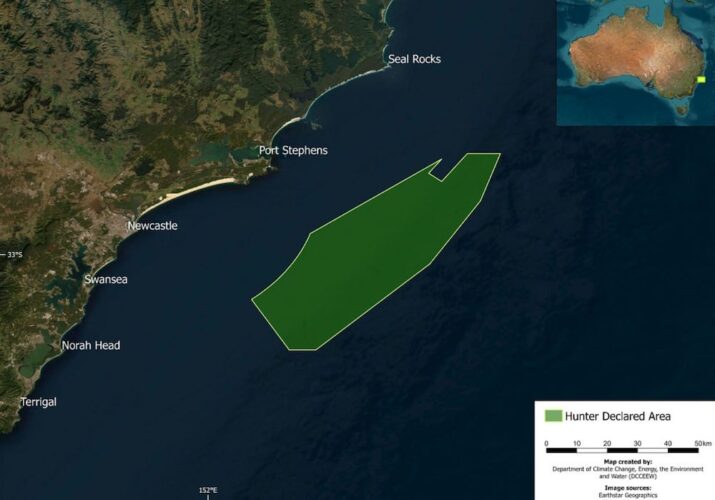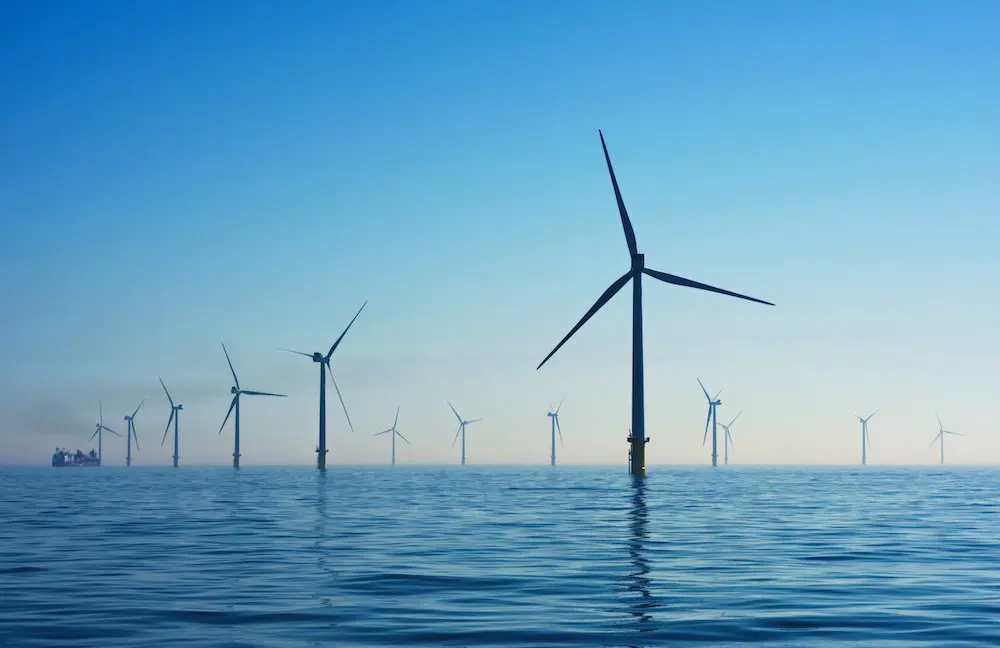The federal government has officially declared Australia’s second offshore wind development zone, a nearly 2,000 kilometres square area in the Pacific Ocean off the coast of the New South Wales Hunter region capable of hosting up to 5GW of turbines.
Federal energy minister Chris Bowen says feasibility licence applications for the declared area, which stretches over 1,800km2 between Swansea and Port Stephens, will open in just a few weeks’ time, on August 8.
The new offshore wind zone, the first for NSW, joins the nation’s first in the Bass Strait off the coast of Victoria, formally declared by the Albanese government in December 2022. It will be the first to host floating offshore wind, because of the depth of waters.
And like in Victoria, the new zone targets an industrial hub still heavily dependent on local coal power generation and seeks to support its transition to renewable energy.
“The Hunter is undergoing significant economic change, and the prospect of creating new job opportunities for decades to come through a new offshore wind industry is a game changer,” minister Bowen said.
“Today’s declaration opens the door for a new industry in the Hunter, which could create over 3,000 construction jobs and another 1,560 ongoing jobs.
“This is an important part of a suite of measures which will position Newcastle and the Hunter as a clean energy hub, including an $100 million investment to ensure hydrogen readiness at the Port of Newcastle. Newcastle has a bright future.”
Size matters
Where the Hunter zone differs quite markedly from its Victorian counterpart is in size: 1,800 square kilometres vs roughly 15,000 square kilometres, respectively.
Bowen says the final design opted for a smaller footprint than the originally proposed zone, to balance the views of the local community, local industry, and sea users.
Public consultation on the first NSW offshore wind zone attracted just shy of 2,000 submissions after it was opened in February.
“The Albanese Labor government has listened to community feedback and revised the offshore wind zone accordingly to ensure it coexists alongside whale migration, bird and sea life, and our shipping industry,” Bowen said on Wednesday.

But this is bound to disappoint the many developers with projects waiting in the wings, some of which had already expressed concern that the proposed zone was too small, even before it was trimmed back further.
Andy Evans, the CEO of Oceanex Energy which is working up the Novocastrian Offshore Wind project off the coast of NSW, had previously said the proposed zone should be double the size.
(Although in response to this week’s Hunter declaration, Oceanex said on LinkedIn that the news was “cause for great celebration … given the solid ties we have already built with many in this community.”)
“The zone is smaller than, say, Gippsland, for very good and important reasons – defence-related reasons,” Bowen said in April at a press conference at the closing Liddell coal plant in the Hunter. “That won’t change.”
The revised zone will be 20km from the coast in the north and over 35km from the coast in the south – changes the government says will enable continued safe management of shipping and other sea industries. The height of turbines will be limited to 260m for aviation safety purposes.
Race to the seabed
Among the developers that will now be hastily fine tuning their bids for a place in the new zone are Australia-based Energy Estate, which is working up the 1.65GW Hunter Central-Coast Offshore Energy project, the 2GW project being developed by OceanEx and Equinor, and the biggest floating wind project proposed for Australian waters yet, now owned by French nuclear giant EDF.
Another, BlueFloat Energy’s Eastern Rise Offshore Wind Project is proposed to be delivered over a period of seven years and have an installed capacity of 1.725 gigawatts.
During the feasibility licence stage, developers will be required to undertake further consultation on individual proposals, including detailed environmental assessments and impacts on other marine users.
Construction can only begin after feasibility stage is completed, and environmental and management plan approvals are gained.
In Victoria, around a dozen projects are vying for a feasibility licence from the federal government to get to work in the Gippsland zone, with only a few expected to be granted at the end of this year.
All hands on deck
In response to the federal declaration of the Hunter zone, the Energy Corporation of NSW (EnergyCo) and the Port of Newcastle said on Wednesday they had finalised a Memorandum of Understanding to identify opportunities in offshore wind.
EnergyCo acting chief executive Chloe Hicks said the Port of Newcastle would be key to importing wind blades, towers and related equipment.
“This partnership has the potential to transform the Hunter region, contribute to our net zero emissions goals and secure the energy needed to create a green hydrogen industry in NSW,” Ms Hicks said.
“Combined with our initiatives to support local content and employment opportunities, this is important to ensuring enabling infrastructure is in place prior to construction of major generation and transmission projects across the State.”
Listen to our interview this week with Bowen on the latest episode of the Energy Insiders podcast.
See RenewEconomy’s Offshore Wind Farm Map of Australia










